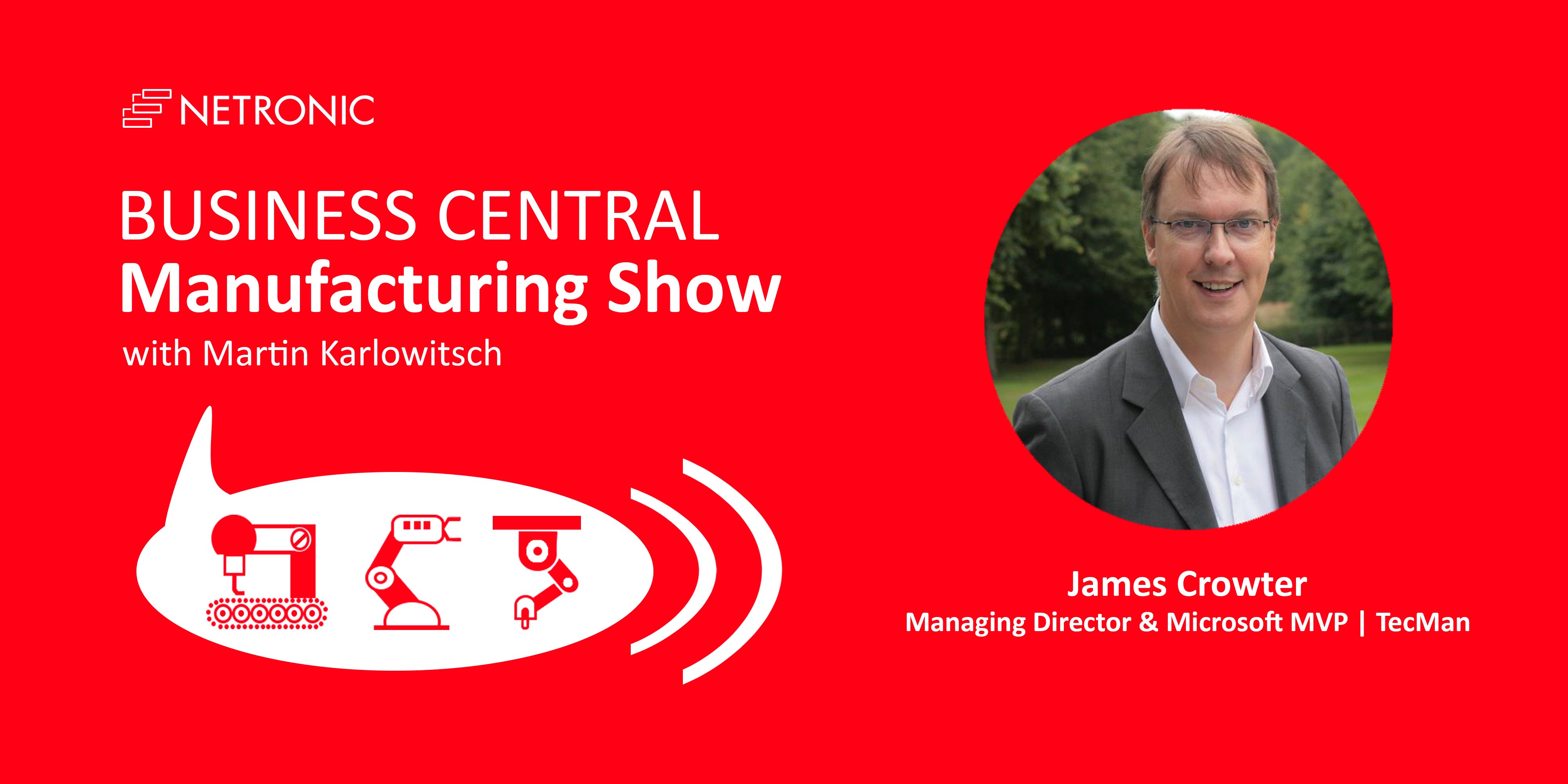Episode 25 of Martin's podcast was all about the difficulties and obstacles that can stand in the way of a successful implementation of Microsoft Dynamics 365 Business Central.
The guest in this jubilee episode was James Crowter from the UK. He is the founder and Managing Director of Technology Management, an established Navision and Business Central partner whom everybody knows as TecMan. In addition, Microsoft has appointed him as MVP (most valuable professional) for business applications for the sixth year running. And if that was not enough, he last year volunteered to become the chairman of the Directions EMEA committee.
James is passionate about how businesses can improve their efficiency by getting process optimal more of the time. And for the last 25 years, he has been working to help organizations of all sizes and types implement the ERP and CRM software that typically they decide they need when things are going wrong. While he has seen projects run unbelievably well, at the same time he has also had some unbelievably hard projects.

Of course, this statement was the ideal hook for Martin and he wanted to know the reasons why projects become hard. Likewise, he asked for tips on how to avoid such negative experiences. James stated that in companies wanting to implement a new system, often the misconception prevails that buying software is a magic bullet to make them well organized.
But there is more to it. For James, accuracy is not achieved by just implementing software but is a state of mind. Hence, in some cases, in addition to changing the software, companies also have to change their people's approach to the way that they do things.
According to James, "garbage in, garbage out" is one of the main reasons why projects sometimes become so hard. To avoid this, ERP users should strive at having a well-structured and maintained database. You can have the best tool in the world but if you don't use it in the correct way and if you feed it poorly maintained data, you won't get a good result. Consequently, people need to know that they have to be prepared to put in the work to get the results they want. From James' experience, this bit is often what they lack.
So, the foundation for a successful business software implementation is laid by the companies themselves: people have to be willing to put the time in, devote the resources, prioritize this new system, and what it's going to take to make it operate and produce the results that they know they need.
In that regard, an important parameter for many ERP-supported processes in manufacturing is precise time estimations. Often the responsible people only have a rough idea about what process is going to take how much time and will be done by whom. But it is vital that the processes get quantified precisely. You have to outline them as early as possible in as much detail as possible.
As it is absolutely essential that a significant amount of time is put in for initial data entry and initial data structure definition, the question arose as to what extent this is manual work or can be automated. As James put it, the key question here is rather "What do you actually need?" than "What have you historically done?" and that requires not the data entry per se, but needs decisions about what the data should be.
This is a process of evolving and revising and hence is very individual.
This great extent of "individualness" is a bit in contrast to Microsoft's recommendation of keeping things mostly standard and avoiding individual ERP systems. James admitted that he is skeptical of using templates in manufacturing. In his opinion, a lot of processes are very similar across different companies, but the structure is different, like planning subcontract vs. sub-assemblies. And it would be counterproductive to go into the companies and rip up all their job descriptions. You'd need to structure the processes so that they support the way people work and in this, there's certainly a lot of individuality involved.
Of course, there are a few standard processes that could be suitable for a templated approach, but this, of course, depends on the structure of the company, its size, and how it is organized.
This led them back to the key message of their conversation, the importance of the manual and thorough and thoughtful parameter set up - now with a focus on item parameters. They agreed that it is vital that this is done by the production managers or whoever is in charge of the production because these people know their company's needs and hence should not delegate this task to temps or outsource it.
The conversation then ended with Martin's admission that before the two of them would meet again - this already being a done deal - he certainly would need to get smart on item parameter setting.
You can tune in below 👇 or anywhere you get your podcasts.
📢 What to listen for
[03:00] Why buying software is not the magic bullet
[06:40] How to overcome the hurdles in projects
[10:08] The extent to which data entry can get automated
[14:31] The usefulness of a templated approach in production scheduling
[24:59] Why the people who are going to run the system should do the data entry
